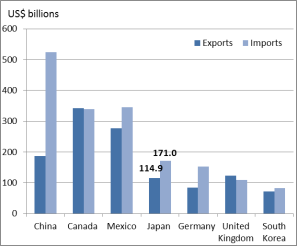Figure 1. U.S. Goods and Services Trade with Top Partners, 2017

Source: U.S. Census Bureau and Bureau of Economic Analysis.
Since coming into office, the Trump Administration has expressed concerns about the U.S. trade deficit with Japan and an interest in talks on a bilateral free trade agreement (FTA), a move Japan has resisted. On April 17-18, 2018, President Trump and Prime Minister Abe held a summit to discuss U.S.-Japan relations and regional security issues. Trade was a highly anticipated subject of the meeting.
Several recent trade developments posed an important backdrop to the meeting. In early March, Japan with 10 other countries, not including the United States, signed the Comprehensive and Progressive Agreement for Trans-Pacific Partnership (CPTPP). The Japan-led CPTPP, also called TPP-11, is a revised version of the original U.S.-signed (but not enacted) TPP agreement, from which President Trump withdrew in 2017. CPTPP is designed to eventually eliminate most tariff and many non-tariff barriers among the parties.
In March, President Trump also proclaimed new steel and aluminum tariffs following an investigation over the national security implications of U.S. imports of these products. Unlike other major U.S. trading partners and allies, including Canada, Mexico, the European Union, and South Korea, Japan was not granted a tariff exemption. Some viewed the lack of an exemption as an attempt to pressure Japan into agreeing to bilateral trade talks.
The April summit, however, did not lead to breakthrough announcements on bilateral trade issues or a clear path forward for future negotiations. Both sides agreed to "intensify trade and investment discussions," to be led by U.S. Trade Representative Robert Lighthizer and Japan's Minister in charge of Economic Revitalization, Toshimitsu Motegi, but largely maintained their earlier positions. Japan continued to hold back from endorsing a bilateral FTA negotiation, instead preferring U.S. participation in the TPP-11. Meanwhile, President Trump, despite giving mixed signals before the summit on potential interest in rejoining TPP, emphasized a preference for "negotiating a one-on-one deal," focusing on reducing the U.S. trade deficit and removing barriers to U.S. exports.
|
Figure 1. U.S. Goods and Services Trade with Top Partners, 2017 |
 |
|
Source: U.S. Census Bureau and Bureau of Economic Analysis. |
In 2017, the United States exported $115 billion in goods and services to Japan and imported $171 billion (Figure 1). Over the past decade, however, Japan's relative importance in U.S. trade has declined with the rise of China. Japan is the second largest source of U.S. foreign direct investment (FDI), behind the United Kingdom. In 2017, the United States had a bilateral trade deficit (goods and services) with Japan of $56 billion, which has been flagged by the Trump Administration as a concern. With a deficit of about $50 billion, motor vehicles and parts are a major driver of the U.S.-Japan goods trade deficit (about $70 billion). Motor vehicle and parts trade has historically been a source of bilateral trade frictions, particularly concerns over U.S. access to the Japanese market for these and other products. At the same time, Japan is a key source of investment supporting motor vehicle and parts production in the United States.
Whether forthcoming consultations will accelerate prospects for a formal U.S.-Japan trade negotiation is an open question. USTR Lighthizer acknowledged in recent testimony that despite the Administration's stated interest, it may not be the "appropriate time" for an FTA negotiation with Japan, given Japanese preoccupation with implementing CPTPP. At the same time, some members of Congress have called for the Administration to follow through on its pledge to negotiate new trade deals, including with Japan. Proponents of a U.S.-Japan trade deal highlight the potential economic benefits of gaining new access to the Japanese market, particularly for agriculture and services, and dismantling various non-tariff barriers. Both countries also share several priorities in advancing new trade rules, including digital trade.
Key issues potentially affecting prospects for formal negotiations include:
While a trade deal with Japan appears unlikely in the near term, Congress may consider several policy issues related to U.S.-Japan relations and future U.S. trade policy: